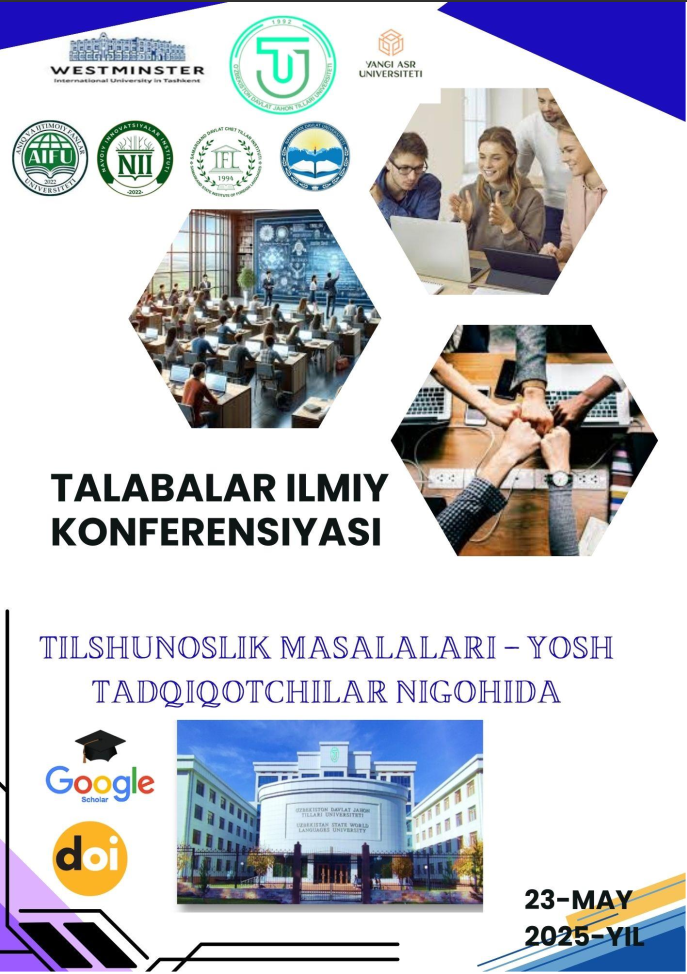COGNITIVE MECHANISMS BEHIND HOMONYMY IN UZBEK AND ENGLISH LANGUAGES
https://doi.org/10.5281/zenodo.15517270
Kalit so‘zlar
Homonymy, cognitive linguistics, lexical ambiguity, semantic processing, mental lexicon, meaning disambiguation, conceptual mapping, linguistic worldview, cross-linguistic analysis.Annotasiya
This article explores the cognitive mechanisms that underlie the phenomenon of homonymy in the Uzbek and English languages, offering a comparative perspective rooted in the principles of cognitive linguistics. Homonyms words that share the same form but possess different meanings are a rich source for examining how language users mentally organize and process lexical ambiguity. By investigating how native speakers of Uzbek and English perceive, differentiate, and contextualize homonymous expressions, the study sheds light on the cognitive strategies that facilitate meaning construction and disambiguation in real-time language use.
Foydalanilgan adabiyotlar ro‘yhati
Alimova, D. (2024, October). Teaching English through English: Proficiency, Pedagogy and Performance. In Conference Proceedings: Fostering Your Research Spirit (pp. 779-782).
Croft, W., & Cruse, D. A. (2004). Cognitive Linguistics. Cambridge: Cambridge University Press.
Erdanova, Z. (2019). Onomastic is a mirror culture. In Science and practice: a new level of integration in the modern world (pp. 149-152).
Evans, V., & Green, M. (2006). Cognitive Linguistics: An Introduction. Mahwah, NJ: Lawrence Erlbaum Associates.
Geeraerts, D. (2010). Theories of Lexical Semantics. Oxford: Oxford University Press.
Kholmurodova, G. (2020). Cognitive Aspects of Lexical Ambiguity in Uzbek and English. Tashkent State University of Uzbek Language and Literature.
Kupaysinovna, S. G. (2021). IMPROVEMENTS AND CHALLENGES OF DISTANCE LEARNING DURING PANDEMIC. Проблемы науки, (6 (65)), 94-96.
Mamatkulova, F., & Abduvaliyeva, M. (2025, April). MODERN METHODS OF TEACHING ENGLISH. In Conference Proceedings: Fostering Your Research Spirit (pp. 186-187).
Rashidova, G. (2023). INGLIZ TILI DARSLARIDA YOZISH KO’NIKMASINI O’RGATISH JARAYONIDA ZAMONAVIY INNOVATSION TEXNOLOGIYALARDAN FOYDALANISH. Engineering problems and innovations.
Sultonova, M. (2024, October). Features of Critical Thinking Skills for B1 Level Learners. In Conference Proceedings: Fostering Your Research Spirit (pp. 786-790).
Мухташамова, П. З. (2020). Характеристика грамматических навыков в различных видах речевой деятельности. Вестник науки и образования, (12-2 (90)), 86-88.

